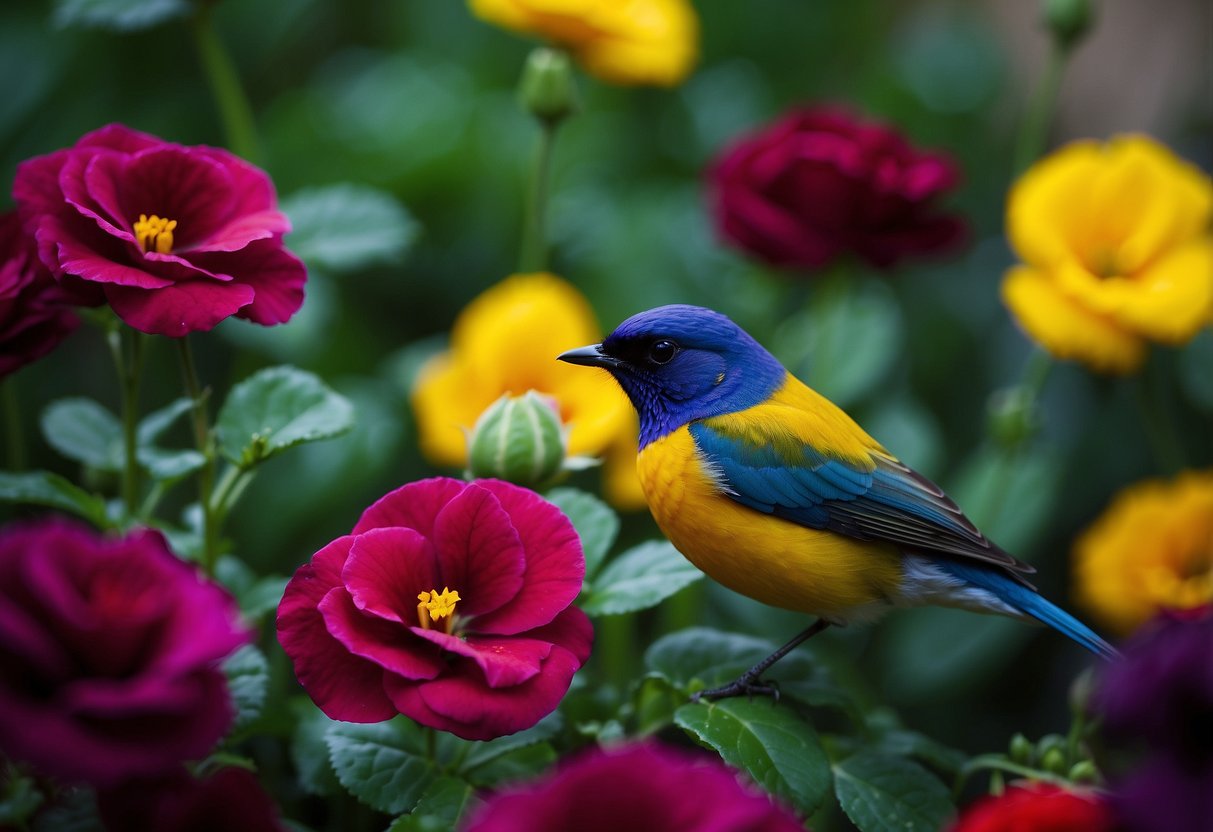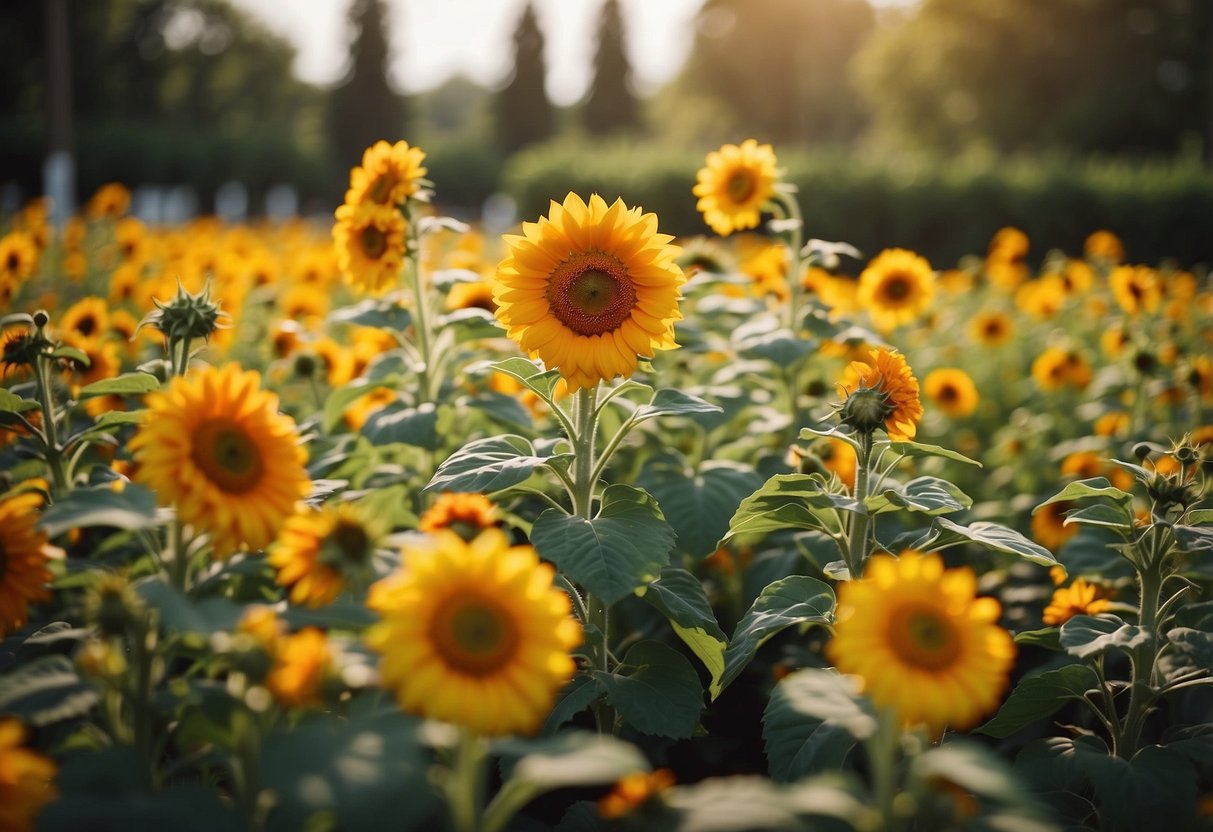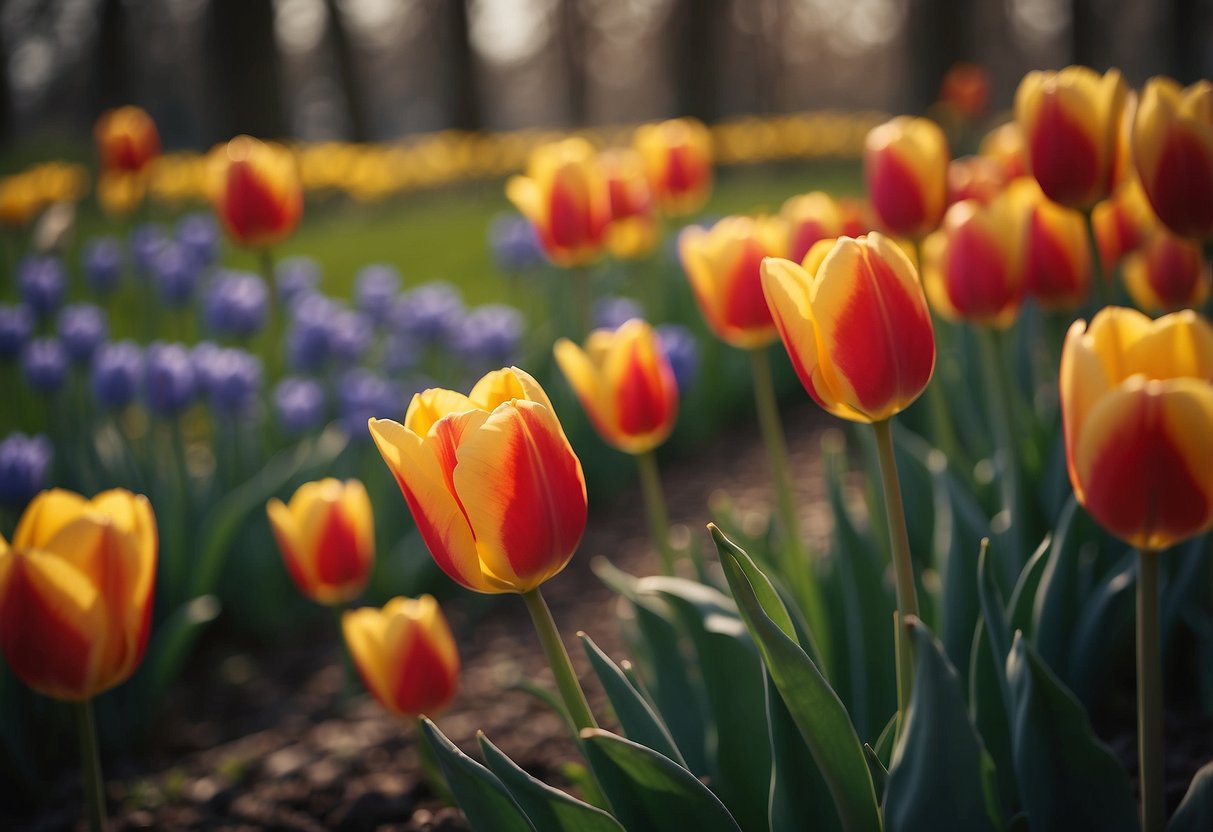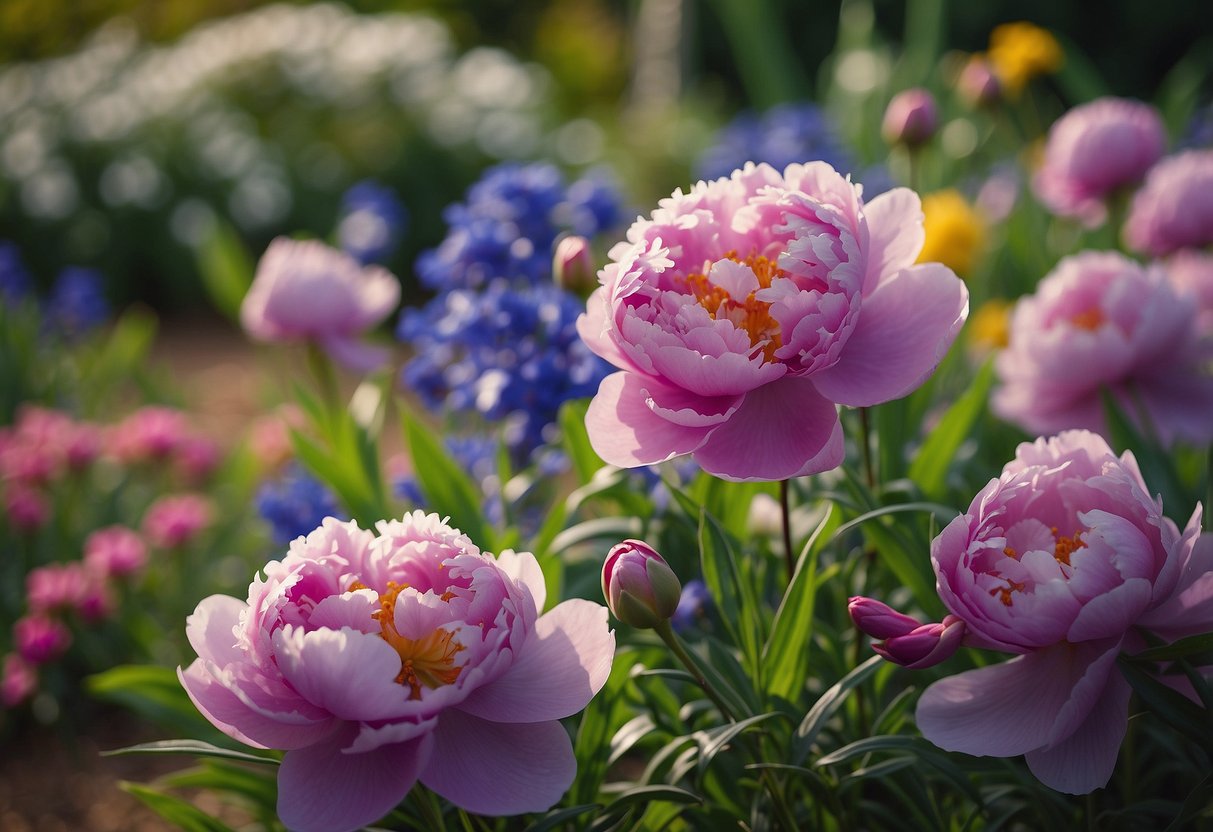Garden Colors That Go Together: Bright Ideas for a Stunning Yard
Choosing the right colors for your garden can make a world of difference in creating a stunning outdoor space. By understanding which shades blend beautifully together, you can transform your garden into a harmonious and eye-catching retreat. Combining colors like soft pastels, vibrant reds, and calming blues can create both peaceful and energetic garden spaces.

Whether you prefer a bold burst of colors or a more subtle palette, knowing how to pair different hues will help you achieve the look you desire. With the right combinations, your garden can reflect your unique style and provide a delightful visual experience throughout the seasons.
1) Lavender and Sage

Lavender and sage are both plants that thrive in sunny, well-drained conditions. Their scents are strong yet complementary, creating a delightful aroma in your garden.
Lavender’s purple flowers pair beautifully with the textured, green leaves of sage. Together, they offer a contrast that is both visually appealing and low-maintenance.
Consider planting them in a spot where they can receive full sun. They will look gorgeous next to stone walls or in herb gardens. Enjoy the harmony they bring to your outdoor space!
2) Rose and Delphinium

Pairing roses with delphiniums creates a gorgeous garden scene. The vibrant colors of the roses and the tall, elegant spikes of delphiniums complement each other well.
For a stunning contrast, use red or pink roses alongside blue delphiniums. These combinations add both height and color variety to your garden.
To create a softer look, combine white roses with pale blue or lavender delphiniums. This pairing brings a touch of elegance and tranquility to your garden space.
3) Sunflower and Marigold

Sunflowers and marigolds make a bright and cheerful combination for your garden.
Sunflowers provide a tall backdrop with their big, sunny heads. Marigolds, on the other hand, fill in the lower spaces with their bright orange and yellow blooms.
Both flowers attract bees and other pollinators, helping your garden thrive. Marigolds also repel pests, protecting the sunflowers. This creates a healthy and vibrant garden environment.
4) Petunia and Sweet Alyssum

Petunias and Sweet Alyssum are a wonderful match for your garden. Petunias bring bright colors like pink, purple, and red. Sweet Alyssum adds a soft, white touch.
Sweet Alyssum has a lovely scent. It also attracts helpful insects, keeping your garden lively. Petunias cover the ground, while Alyssum trails beautifully.
They thrive in full sun and look great in containers or borders. This duo offers both beauty and practicality for your garden spaces.
Learn more about Petunia companion plants.
5) Hydrangea and Hostas

Hydrangeas and hostas create a beautiful and eye-catching combination in your garden. The large, colorful blooms of hydrangeas contrast perfectly with the hostas’ broad, lush leaves.
Hydrangeas provide vibrant flowers, while hostas add depth and texture with their foliage. When planted together, they create an appealing display throughout the growing season.
For best results, plant your hostas in moist, well-drained soil with partial shade. Hydrangeas thrive in similar conditions, making them perfect partners. Adding a mix of these plants can enhance any garden with their complementary beauty.
6) Tulip and Daffodil

Tulips and daffodils are a great choice for any garden. They bloom in spring and come in many colors that look amazing together.
To plant these flowers, make sure to space tulip bulbs about 4 inches apart. Daffodil bulbs should also be 4-6 inches apart.
Ensure the soil is well-drained to prevent bulb rot. Adding some sand or gravel can help with this. For more details, check out this guide.
7) Geranium and Lavender

Geranium and lavender make a beautiful pair in your garden. Both love full sun and can thrive in well-draining soil. Geraniums bring bright colors and can deter pests like earworms and beetles.
Lavender complements this with its lovely purple hues and its ability to repel insects. Though they have different water needs, with a bit of care, these two can flourish together. Learn more about their benefits at geranium companions and lavender companion plants.
8) Peony and Iris

Peonies and irises create a stunning mix of colors in your garden.
Peonies offer large, fragrant blooms in shades of pink, red, and white.
Irises, like the Bearded Iris, provide a variety of vibrant hues such as blue, purple, and yellow.
Together, their unique textures and colors complement each other beautifully.
Consider planting them together to enjoy a vibrant, lush display every spring.
9) Begonia and Coleus

Begonias and coleus make a beautiful combination in any garden. Begonias have bright, colorful flowers that stand out.
Coleus is known for its striking foliage that comes in various shades like pink, red, and green. These plants grow well together in both shady and sunny spots.
You can plant them in containers or directly in the garden for a vibrant display. Both plants are relatively easy to care for, making them perfect for beginners. Check out more information on begonia companion plants.
10) Zinnia and Black-eyed Susan

Zinnias and Black-eyed Susans are a vibrant duo for your garden. The bright tones of Zinnias mix well with the sunny yellow petals and dark centers of Black-eyed Susans.
Both flowers attract pollinators, which can help keep your garden buzzing with life. Their colors create a lively and cheerful atmosphere.
For a stunning look, pair Zinnias in shades of pink, red, or purple with Black-eyed Susans. This combination can brighten up any space with minimal effort.
Understanding Color Theory in Gardening

Color theory helps you create visually appealing gardens by combining colors effectively. Knowing about primary, secondary, and tertiary colors along with warm and cool colors can transform your garden space.
Primary, Secondary, and Tertiary Colors
Primary colors are the foundation of the color wheel. They are red, yellow, and blue. These colors can’t be created by mixing other colors together.
Secondary colors are created by mixing two primary colors. These include green (blue + yellow), orange (red + yellow), and purple (red + blue).
Tertiary colors are made by mixing a primary color with a secondary color. Examples are red-orange, yellow-green, and blue-violet. Using these combinations in your garden helps create a balanced and harmonious look.
Using a color wheel can guide your choices. It’s a helpful tool that shows how different colors relate to each other.
Warm vs. Cool Colors
Warm colors include red, yellow, and orange. These colors stand out and grab attention. They’re energizing and create a lively atmosphere in your garden.
Cool colors include blue, purple, and green. They make spaces feel calm and spacious. Using cool colors can help make a small garden look larger.
Combining warm and cool colors can add depth and contrast to your garden. For instance, placing warm colors in the front can make them pop while cool colors in the back can create an illusion of depth.
Choose your garden colors thoughtfully to enjoy a harmonious and vibrant outdoor space.
Creating Harmonious Garden Color Schemes

To create a beautiful garden, using colors that complement each other is key. You can use complementary and analogous color schemes to achieve harmony in your garden.
Complementary Colors
Complementary colors are pairs located directly opposite each other on the color wheel. When used together, they create strong contrast and vibrant looks. In gardens, common complementary pairs include blue and orange or purple and yellow.
For instance, you might plant purple lavender next to yellow marigolds. This combination will make both colors pop. Another example could be pairing a deep blue delphinium with bright orange nasturtiums. These choices make your garden visually interesting and dynamic.
- Use these pairs sparingly to avoid overwhelming the space.
- Pair vibrant flowers with neutral background plants for balance.
- Complementary colors work best in small areas or as focal points.
Analogous Colors
Analogous colors are side-by-side on the color wheel. These colors blend well and create a calming and cohesive feel. Examples include grouping different shades of green, blue, and purple or combining warm colors like yellow, orange, and red.
In a garden, you might use pale blue hydrangeas alongside deep blue irises and purple alliums. This provides a soothing yet interesting color palette. You could also combine yellow daisies with orange tulips and red roses for a warm, inviting effect.
Important Tips:
- Stick to one section of the color wheel.
- Vary the plant heights and textures for depth.
- Use analogous colors for a natural and peaceful look.
For more detailed ideas on creating harmonious garden color schemes, you can check out these stunning ways to combine shades for plants and furniture or learn more about using color in the garden.
Seasonal Color Considerations

When planning your garden, it’s essential to think about how colors will change with the seasons. Each season brings its own unique palette of colors that can enhance your garden’s beauty.
Spring:
Spring is a time for bright, cheerful colors. Think of tulips in reds, yellows, and pinks. Daffodils and hyacinths add yellow and purple hues. You can also plant crocuses for pops of blue and white.
Summer:
Summer blooms are vibrant and lively. Roses in shades of red, pink, and white, or sunflowers with their bold yellows, can create a stunning display. Consider adding marigolds and zinnias for more orange and red tones.
Fall:
In fall, your garden can reflect the changing leaves. Think of chrysanthemums in red, orange, and yellow. Pansies and asters can provide purple and blue accents. Ornamental grasses can add soft browns and tans.
Winter:
Even in winter, you can keep your garden colorful. Evergreen plants, like holly and pine, bring greens. Winter berries, such as those from the bright red holly, can add a pop of color. Plants like heather can provide pink and purple hues.
Quick Reference
| Season | Colors | Plants |
|---|---|---|
| Spring | Red, yellow, pink, purple, blue | Tulips, daffodils, crocuses |
| Summer | Red, pink, white, yellow | Roses, sunflowers, marigolds |
| Fall | Red, orange, yellow, purple | Chrysanthemums, asters |
| Winter | Green, red, pink, purple | Holly, pine, heather |
By choosing plants that bloom in different seasons, you ensure your garden has a constant display of beautiful colors year-round.







